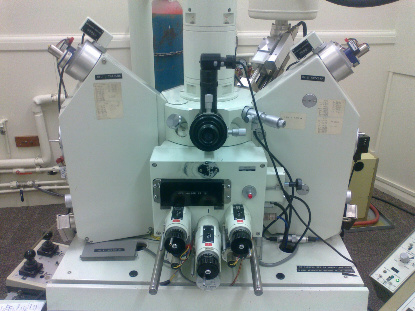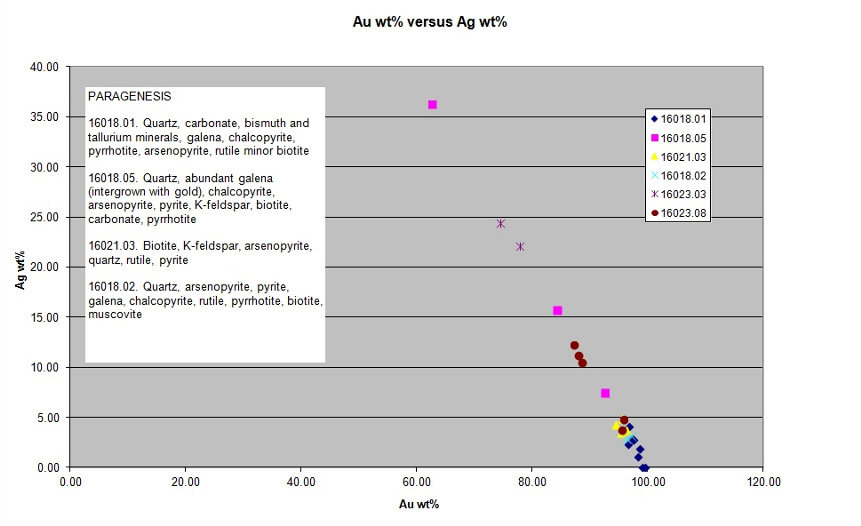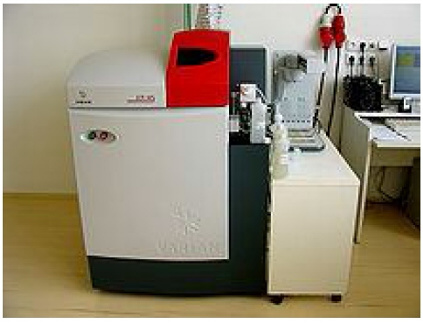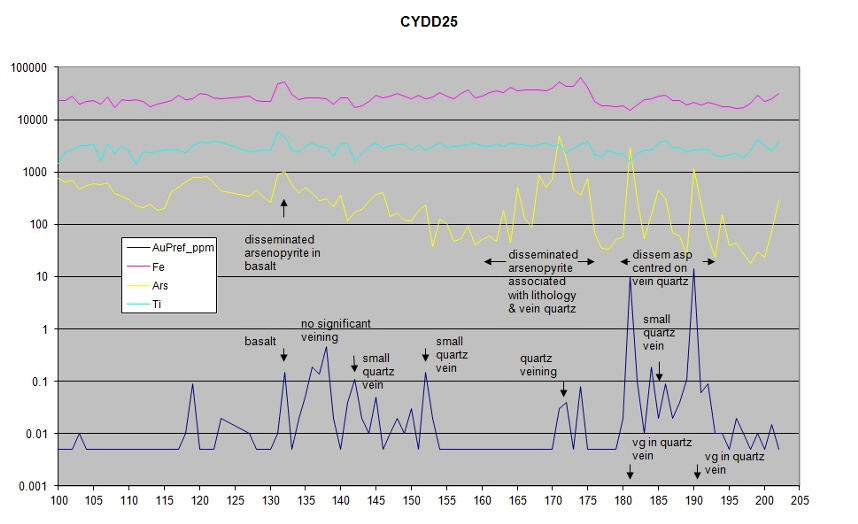
In situ mineral chemistry, as a follow-up to petrography and mineragraphy, may most cost-effectively be obtained by Electron Microprobe Analysis (EMPA). EMPA allows the precise qualitative identification of minerals, compositions of minerals, compositional variation between minerals, and definition of zoning within minerals. Microprobe analysis together with SEM is particularly useful in identifying very small mineral grains (less than 5 microns) where optical properties are not resolvable.
Other means of determining accurate mineral chemistry with lower element detection limits than those of EMPA include Laser Ablation, Inductively Coupled Plasma-Mass Spectroscopy (LA ICP-MA), Secondary Ion Mass Spectrometry (SIMS) & Laser Ablation Inductively Coupoled Atomic Emission Spectrometry (LA-ICP AES).
LA ICP-MA may be used for in situ radiogenic and stable isotope analyses, the former applied to dating of minerals inclusing zircon, xenotime and sphene and the latter to the nature of water-rock interactions and hydrothermal fluid provenance. LA ICP-MA may also be applied to determination of fluid inclusion chemistry.

Above. Gold alloy chemistry determined by Electron Microprobe Analysis with variation in ratios of gold and silver characterising a range of hydrothermal ore associations within an orogenic/intrusion-related mineral setting.
Whole rock or bulk rock chemistry as an adjunct to mineralogy may be applied to the classification of unaltered to altered rock types. Calibrated by mineralogy, whole rock chemistry may be used to define or interpret metasomatic/ hydrothermal modification of primary rock types and provide a proxy to primary and secondary mineralogy. X-ray Fluorescence (XRF) provides a front line means of major and trace element analysis with lower detection limits acheived through application of other techniques including Fire Assay, Atomic Adsorption (AA), Inductively Coupled Plasma Mass Sectrometry (ICP MS) & Inductively coupled Atomic Emission Spectrometry (ICP AES).
Right. An example of ICP-MS equipment ued for multiple-element whole rock chemical analysis.


Down hole multi-element chemistry produced by ICP-MS analysis with anotated geologic features correlating with geologic features and ore mineralogy.